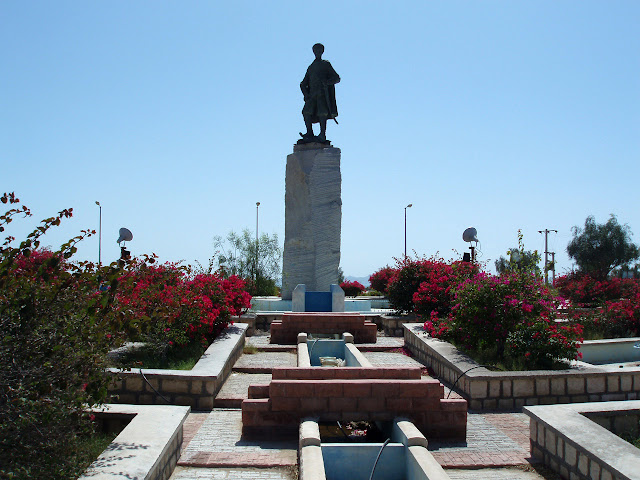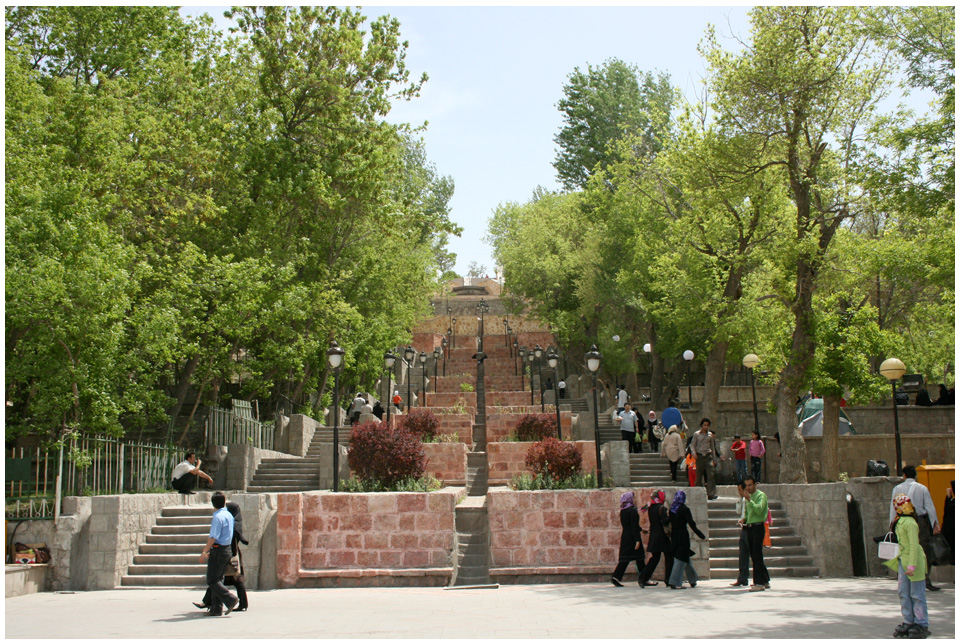Imam Gholi Khan (امام قلی خان) was an Iranian military and political leader of Georgian origin who served as a governor of Fars, Lar and Bahrain for Shah Abbas I. He was the son of Allahverdi Khan, the celebrated Georgian general in the service of Iran’s Safavid Dynasty and of 33 Pol fame.
Imam Gholi Khan is first mentioned as governor of Lar in Fars in 1610. He succeeded his father as governor-general of Fars in 1615, but retained his position at Lar and was granted the rank of an amir of the divan by Shah Abbas I. In 1619-20, Imam Gholi Khan oversaw Shah Abbas’s project to link the headwaters of the Karoon and Zayandeh Rivers in order to enhance the water supply of his capital, Isfahan. Shah Abbas placed complete trust in Imam Gholi Khan who grew in influence and prestige and became one of the wealthiest khans of the Safavid empire. He built a school and many palaces in Shiraz and the still standing Khan Bridge over the Kor at Marvdasht.
Imam Gholi Khan managed to bring much of the southern parts of modern day Iran under his control from Jask Port to Arvand River and most of the islands in the Persian Gulf. At all times he had an army to the tune of 25 to 30 thousand soldiers at his disposal. In spite of his clear dominance and King-like rule over his territory, Imam Gholi Khan showed complete loyalty to Shah Abbas I.
Being in charge of the Safavids' southern possessions, Imam Gholi Khan continued his father’s policy of undermining the Portuguese positions in the Persian Gulf. In 1621, he persuaded the English East India Company to cooperate with the Persians by threatening to cancel the trading privileges that had been granted to the company by the Shah in 1615. Furthermore he blocked access to fresh drinking water in Qeshm Island and encouraged the Amir of Hormuz to revolt against the Portuguese. He then claimed that prior to the Portuguese presence, Hormuz Island was part of Lar jurisdiction and thus will continue to be as such. The Portuguese rejected this claim which effectively set the stage for military confrontation between the two sides. While the Portuguese managed to regain access to a minimal amount of fresh water and constructed a fortress in anticipation of battle, Imam Gholi Khan accompanied by an army of 5,000 soldiers finally attacked Qeshm Island.
Imam Gholi Khan’s army aided by the English navy laid to siege to the Portuguese Fort which was defended by an additional 250 local Arabs in addition to the Portuguese military troops. Imam Gholi Khan conquered the Fortress and Island and following a brief reinforcement of his troops, attacked Hormuz Island. After a gallant defense of ten weeks but yet sensing imminent defeat, the Portuguese finally surrendered. Thus in 1622, after 118 years of foreign dominance, the Strait was finally liberated.
After the death of Abbas, Imam Gholi Khan found himself in disagreement with new favorites of Shah Safi, Abbas’s successor to the throne of Iran, and became marginalized. Furthermore, they viewed Imam Gholi Khan as a threat to the new King’s throne. Ultimately in 1633, under the guise of defending Tabriz against Turkish attacks, he was summoned along with his three sons to the King in Qazvin. At Shah Safi's orders the four of them were decapitated while his vast possessions were converted into the crown domain.
Today a statue of Imam Gholi Khan stands tall in Imam Gholi Khan Square in Qeshm Island.














